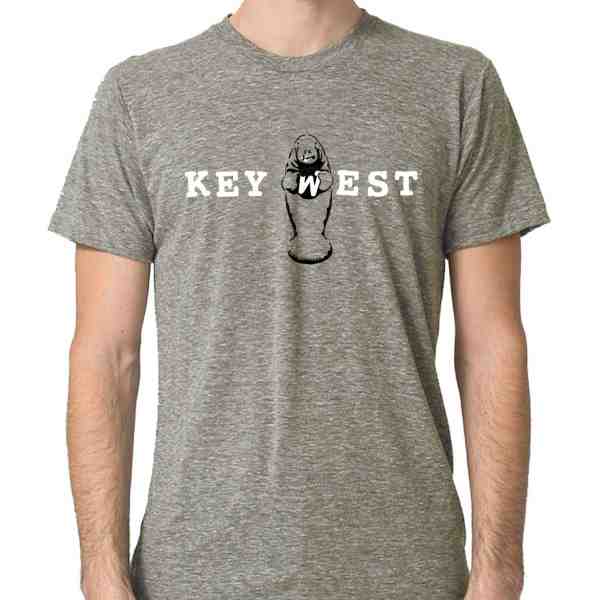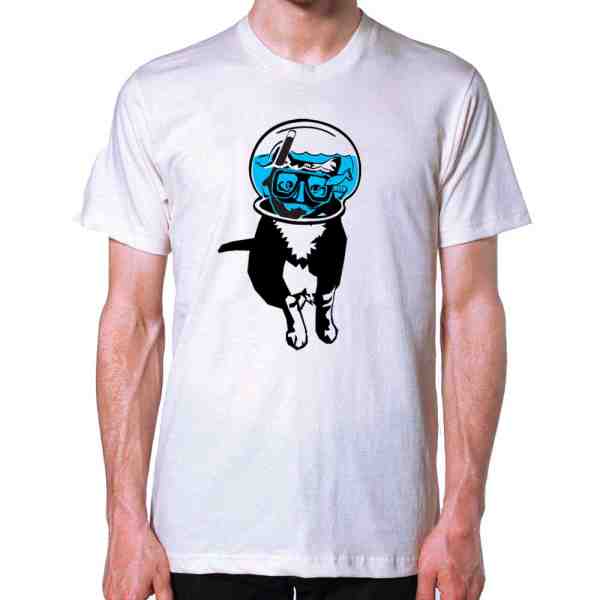Street Art Chronicles: From Graffiti to Global Phenomenon
Street art, an changing artistic phenomenon, transforms urban spaces worldwide into vibrant canvases. This dynamic form of art, found on city streets, exterior walls, and public areas, turns cityscapes into open-air museums. It captures attention with its bold styles and powerful messages that speak directly to social and political themes. Through various forms like graffiti, murals, stencils, and even unconventional mediums like yarn bombing, street art plays an essential role in shaping the visual and cultural identity of urban areas.
For those curious about street art:
- Street art encompasses art made in public spaces, often without permission.
- It is known for reflecting societal issues and sparking discussions.
- Popular forms include graffiti, large murals, and installations.
I’m Chris Higgins, a graphic artist turned designer at Handshucked Art and Designs. My journey in street art began with projects like the 60-foot mural in Key West, blending graffiti and pop art influences into distinctive designs. Now, let’s dive deeper into the fascinating journey of how street art disrupted the status quo and became a global phenomenon.
The Evolution of Street Art
The story of street art begins with graffiti, a form of expression that first gained prominence in the busy cities of New York and Philadelphia during the 1960s. In these urban landscapes, graffiti emerged as a voice for the voiceless, a way for individuals to claim their space and make their mark on the world.
Graffiti Origins: New York City and Philadelphia
In New York City, the 1960s were a time of social upheaval and economic hardship. Amidst this backdrop, young artists began to use the city’s walls and subway cars as their canvas. What started as simple tags—personal signatures or nicknames—quickly evolved into more complex and colorful designs. This was the birth of modern graffiti, a rebellious art form that would eventually gain global recognition.
Philadelphia also played a crucial role in the development of graffiti. One of the earliest known graffiti artists, Cornbread, began tagging his name around the city in the late 1960s. His work inspired many others to pick up spray cans and express themselves in public spaces.
The 1970s: The Golden Age in New York
The 1970s saw the explosion of graffiti in New York City. Artists like Jean-Michel Basquiat and Keith Haring began experimenting with new styles and techniques, changing graffiti from mere vandalism into a respected art form. These pioneers pushed the boundaries of what was possible, using their art to comment on social and political issues.
Photographer Martha Cooper documented this vibrant scene, capturing the essence of the graffiti movement in her book “Subway Art.” Her work helped to legitimize graffiti and spread its influence beyond the confines of New York City.
Street Art’s Global Reach
As the decades passed, street art evolved further, incorporating new styles and techniques. Artists began to experiment with stencils, posters, and even yarn bombing, creating a diverse array of public artworks. The movement spread across the globe, with cities like London, Berlin, and São Paulo becoming new hubs for street artists.
Today, street art is a powerful tool for social commentary and community engagement. It transforms urban environments, turning drab cityscapes into vibrant open-air galleries. From its humble beginnings in New York and Philadelphia, street art has grown into a global phenomenon, inspiring countless artists and captivating audiences worldwide.
In the next section, we’ll explore the key styles and techniques that define street art, from graffiti to LED lights.
Key Styles and Techniques in Street Art
Street art is a diverse and dynamic form of expression that goes beyond traditional graffiti. Let’s explore some of the key styles and techniques that make this art form so fascinating.
Graffiti
Graffiti is the backbone of street art. It began with simple tags or signatures, often created with spray paint. Over time, it evolved into larger, more colorful pieces known as “throw-ups” and “pieces” (short for masterpieces). Graffiti artists, or “writers,” use their work to express identity and make powerful statements. This art form is often associated with hip-hop culture and has roots in urban rebellion.
Murals
Murals are large-scale paintings that transform public spaces. Unlike graffiti, murals are often planned and can be commissioned by cities or organizations. They tell stories, celebrate culture, and bring communities together. Murals can be found on the sides of buildings, in alleyways, and even on ceilings. They are a canvas for artists to showcase their skills and share messages with a wide audience.
Stencils
Stencils allow artists to create detailed images quickly. This technique involves cutting out a design from a material like cardboard or plastic, then spraying or painting over it to transfer the image onto a surface. Banksy, one of the most famous street artists, is known for his use of stencils to create thought-provoking pieces. Stencils make it possible to reproduce the same image multiple times, spreading a message across different locations.
Yarn Bombing
Yarn bombing is a playful and colorful form of street art that uses knitted or crocheted yarn to cover objects in public spaces. Also known as “guerrilla knitting,” this technique adds a touch of warmth and whimsy to urban environments. Yarn bombers may wrap trees, benches, or lampposts in vibrant patterns, creating unexpected bursts of color that invite passersby to stop and admire.
LED Lights
LED lights are a modern addition to the street art toolkit. Artists use them to create illuminated installations that can transform entire areas at night. These works play with light and shadow, adding a dynamic element to the urban landscape. LED art can range from simple light displays to complex interactive pieces that respond to movement or sound.
These styles and techniques highlight the creativity and innovation that define street art. From the rebellious roots of graffiti to the bright allure of LED lights, each method offers artists a unique way to engage with the world around them.
In the next section, we’ll dig into the influential artists who have shaped the street art movement, including Banksy, Keith Haring, and Jean-Michel Basquiat.
Influential Street Artists
Street art has been shaped by many talented artists who have left their mark on urban landscapes worldwide. Let’s explore some of the most influential street artists who have transformed this art form into a global phenomenon.
Banksy
Banksy is perhaps the most enigmatic figure in street art. Known for his distinctive stencil work, Banksy uses his art to deliver powerful social and political messages. His pieces often appear overnight, sparking conversation and intrigue. One of his most famous works, Girl with Balloon, made headlines when it partially shredded itself after being sold at auction. Despite his mystery, Banksy’s art is recognized and revered worldwide.
Keith Haring
Keith Haring brought street art into the mainstream during the 1980s. His vibrant, graffiti-inspired drawings often featured bold lines and bright colors. Haring used his art to address social issues like AIDS awareness, drug addiction, and apartheid. His subway drawings in New York City became iconic, breaking down barriers between street culture and high art.
Jean-Michel Basquiat
Jean-Michel Basquiat began his journey as a street artist in New York City. His work combined graffiti with abstract expressionism, creating a unique style that captivated the art world. Basquiat’s pieces often explored themes of race, identity, and power. Despite his short life, his influence endures, and he is celebrated as a pioneer of African American art.
Shepard Fairey
Shepard Fairey is a contemporary street artist known for his bold graphic style. He gained fame for his “Obey” campaign, featuring the iconic image of Andre the Giant. Fairey’s work often critiques political and social systems, and he is the creator of the famous “Hope” poster for Barack Obama’s 2008 presidential campaign. His art blurs the line between street culture and commercial design.
Lady Pink
Lady Pink, born Sandra Fabara, is a trailblazer in the male-dominated world of graffiti. Emerging in the late 1970s, she became known for her vibrant subway train paintings in New York City. Lady Pink used her art to empower women and challenge gender norms. Today, she continues to create monumental works and inspire new generations of street artists.
These artists have each contributed to the evolution of street art, using their unique styles and voices to challenge norms and inspire change. Their work highlights the power of art to communicate and connect with people across the globe.
In the next section, we’ll explore how street art impacts urban environments, from addressing social issues to boosting tourism.
The Impact of Street Art on Urban Environments
Street art is more than just paint on walls. It transforms urban spaces and influences the people who live there. Let’s explore how street art impacts cities and communities.
Addressing Social Issues
Street art often shines a light on important social issues. Artists use public spaces to express messages about inequality, racism, and environmental concerns. For instance, Keith Haring’s work in the 1980s brought attention to AIDS awareness and drug addiction. These visual statements can spark conversations and inspire change.
Political Messages
Street art is a powerful tool for political expression. Artists like Banksy use their work to critique governments and question authority. His piece, Girl with Balloon, is not just art; it’s a comment on hope and loss. Political street art can challenge viewers to think critically about the world around them.
Community Engagement
Street art has the power to bring communities together. Projects like the Tour Paris 13, where artists transformed a building into a vibrant canvas, engage local residents and create a sense of pride. These collaborative efforts can revitalize neighborhoods and foster a sense of belonging.
Boosting Tourism
Cities with thriving street art scenes often become tourist hotspots. Places like Miami’s Wynwood Walls and Berlin’s East Side Gallery attract visitors from around the globe. Street art tours offer a unique way to explore a city’s culture and history. This influx of tourists can boost local economies and highlight the city’s creative spirit.
Street art is a dynamic force in urban environments, addressing critical issues, engaging communities, and drawing visitors from near and far. In the next section, we’ll answer some frequently asked questions about street art, including its different forms and the legal challenges it faces.
Frequently Asked Questions about Street Art
What are the different types of street art?
Street art is incredibly diverse, spanning a variety of styles and techniques. Here are some of the most common types:
- Graffiti: This is the most traditional form of street art, often involving spray paint to create text-based designs or tags. It’s known for its rebellious spirit and connection to hip hop culture.
- Sculptures: Artists sometimes create three-dimensional pieces that are installed in public spaces. These can range from small installations to large, striking structures.
- Poster Art: This involves creating artworks on paper and then pasting them onto walls. It’s a quick way to spread art and messages across a city.
- Sticker Art: Similar to poster art, this involves designing stickers that are placed in public areas. It’s a form of street art that is easy to distribute and often features bold graphics.
- Spray Paint Murals: These are large-scale artworks painted directly onto walls. They can transform entire buildings and are often commissioned to beautify neighborhoods.
Why is street art often considered illegal?
Street art frequently faces legal challenges because it is often created on public property without permission. This can be seen as vandalism, which is defined as the intentional destruction or defacement of property. Legal agreements are sometimes necessary for artists to create murals or other artworks in public spaces. Without these permissions, street artists risk fines or arrest. However, the line between art and vandalism can be blurry, as street art is increasingly recognized for its cultural value.
How does street art differ from graffiti?
While both street art and graffiti share public spaces as their canvas, they differ in intent and style:
- Intent: Graffiti is often about self-expression and marking territory. It’s usually text-based, focusing on the artist’s tag or signature. Street art, on the other hand, often aims to communicate a broader message or story, sometimes even being commissioned or sanctioned.
- Imagery: Street art is more likely to include images, graphics, and complex designs, whereas graffiti primarily involves text-based tagging.
Despite these differences, both forms contribute to the vibrant mix of urban art and continue to evolve with the times.
Conclusion
At Handshucked Designs, we bring the vibrant world of street art to life in Key West, Florida. Our unique artworks are not just about aesthetics; they tell stories, evoke emotions, and celebrate the spirit of creativity.
One of our standout collections is the Lost Cat series. This playful series features whimsical designs like the Buddha Cat and Lucky Cat, blending street art’s edgy charm with a touch of humor. These designs have become a hallmark of our brand, resonating with art lovers and collectors alike.
Another beloved collection is the Hungry Manatee series. Inspired by the gentle giants of Florida’s waters, this series captures the essence of local wildlife with a creative twist. The Hungry Manatee with a doughnut is a particular favorite, showcasing our knack for combining local themes with global appeal.
Through our art, we aim to transform everyday spaces into extraordinary experiences. Whether it’s a 60-foot mural or a hand-printed piece of apparel, our work is a testament to the power of street art to inspire and connect.
Explore our collections and find Handshucked Designs. We invite you to join us on this artistic journey and see how street art can enrich your life. Visit our website to learn more and find your next favorite piece.





